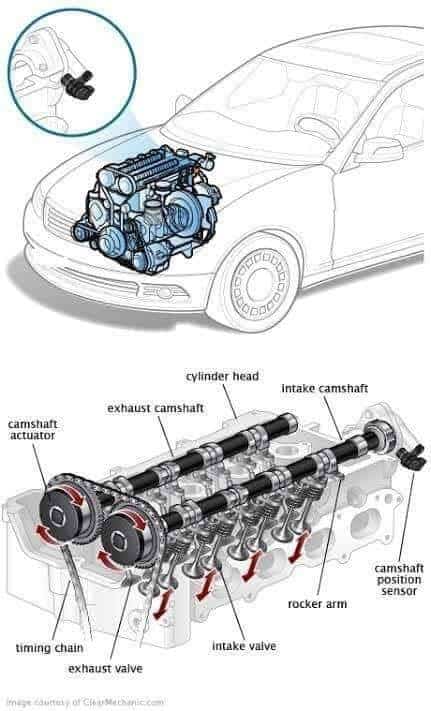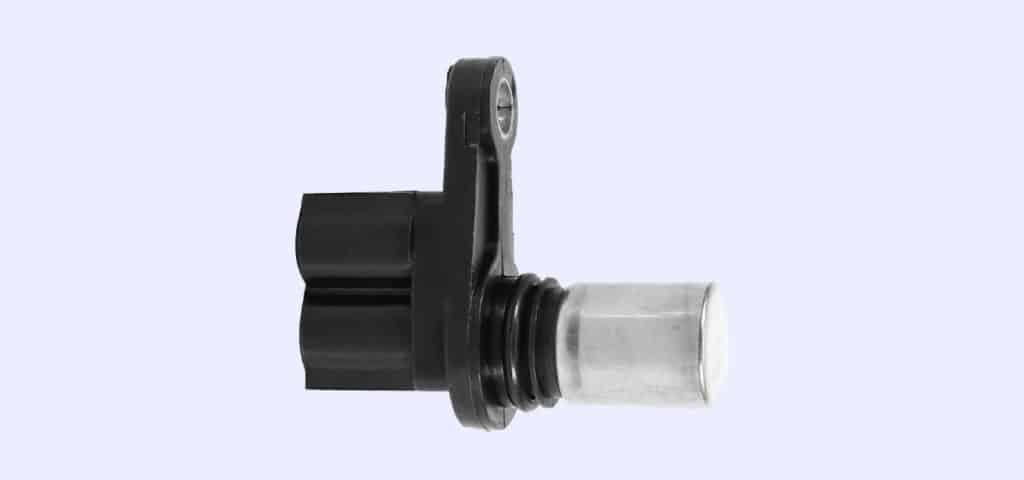If your car’s engine is misfiring or experiencing difficulty starting, it may be time to replace the crankshaft sensor. In this article, we’ll explore what a crankshaft sensor is, how to recognize signs of a faulty sensor, and what it takes to replace it.
What is a Crankshaft Sensor?
A crankshaft sensor is a component that monitors the rotation of the engine’s crankshaft. It sends signals to the car’s computer to help determine the engine’s speed, position, and timing. This information is essential for ensuring proper ignition timing and fuel delivery.

How Much Will it Cost to Replace a Crankshaft Sensor in Canada?
The cost of replacing a crankshaft sensor in Canada can vary depending on the make and model of your vehicle, as well as the mechanic you choose. On average, you can expect to pay between $150 and $350 CAD for parts and labour. The labour time can take anywhere from 1 to 2 hours depending on the complexity of the repair.
What are the Symptoms of a Faulty Crankshaft Sensor?
Symptoms of a faulty crankshaft sensor may include:
1. Intermittent stalling or rough idling: The engine may stall or idle roughly due to inaccurate readings from the sensor affecting the engine’s timing.
2. Difficulty starting the engine: A malfunctioning sensor may not provide the correct information to the engine control module, causing issues with starting the engine.
3. Check engine light: The check engine light may illuminate on the dashboard due to a sensor malfunction or an associated issue.
4. Poor engine performance: Misfires, loss of power, or hesitation during acceleration may occur due to the engine’s timing being affected by a faulty sensor.
5. Reduced fuel efficiency: Incorrect sensor readings can lead to improper fuel-air mixture, causing a decrease in fuel efficiency.
6. Engine fails to start: In some cases, a completely failed crankshaft sensor may prevent the engine from starting at all, as the engine control module cannot determine the correct engine timing without the sensor’s input.
How Long Does a Crankshaft Sensor Last?
A crankshaft sensor can last anywhere from 100,000 to 150,000 kilometers or longer, depending on driving habits and maintenance. However, it’s important to keep an eye out for signs of wear and tear and address any issues promptly to avoid further damage to the engine and other components.
How Does a Crankshaft Sensor Become Defective?
A crankshaft sensor can become defective due to several factors:
1. Age and wear: Over time, the sensor can wear out, leading to decreased performance and eventual failure.
2. Contamination: Dirt, oil, or debris can accumulate on the sensor, causing it to malfunction or provide inaccurate readings.
3. Corrosion: Exposure to moisture or chemicals can cause corrosion on the sensor’s electrical connections, leading to a loss of signal.
4. Heat exposure: Prolonged exposure to high temperatures can damage the sensor’s internal components, affecting its functionality.
5. Wiring issues: Damaged or frayed wiring can cause intermittent or complete loss of signal from the sensor to the engine control module.
6. Physical damage: Accidents, road debris, or engine work can cause physical damage to the sensor or its components, leading to failure.
How Can a Faulty Crankshaft Sensor Affect Other Systems in the Car?
• Poor engine performance: A faulty crankshaft sensor can lead to inaccurate fuel injection and ignition timing, resulting in reduced power and acceleration.
• Increased fuel consumption: Inaccurate sensor readings can cause improper fuel and air mixture, leading to decreased fuel efficiency.
• Misfires and rough idling: Erratic sensor signals can cause the engine to misfire or idle roughly, affecting overall performance.
• Stalling or engine shut down: A malfunctioning crankshaft sensor may cause the engine to stall or shut down completely while driving.
• Check engine light: A faulty sensor can trigger the check engine light, indicating an issue with the engine management system.
Issues with transmission shifting: The crankshaft sensor also affects transmission shifting, so a faulty sensor may lead to rough or erratic shifting.
Is it Safe to Drive with a Faulty Crankshaft Sensor?
Driving with a faulty crankshaft sensor can be risky, as it plays a crucial role in the proper functioning of your vehicle’s engine. The crankshaft sensor is responsible for monitoring the position and rotational speed of the crankshaft, which is vital for accurate fuel injection and ignition timing. A malfunctioning crankshaft sensor may lead to poor engine performance, stalling, or even a complete engine shutdown, which can be dangerous while driving, especially at high speeds or in heavy traffic.
Although your vehicle may still be operational with a faulty crankshaft sensor, it is not recommended to drive under these conditions. The risks associated with a malfunctioning sensor, such as sudden loss of power, stalling, or complete engine failure, can compromise your safety as well as the safety of others on the road. It is best to address the issue as soon as possible by having the sensor inspected and replaced if necessary. This will help ensure optimal engine performance and safe driving conditions.
How Can I Make My Crankshaft Sensor Last Longer?
Here are some tips to help prolong the life of your crankshaft sensor:
• Regular maintenance: Follow the manufacturer’s recommended maintenance schedule to ensure all components, including the crankshaft sensor, are in good condition.
• Avoid extreme conditions: Avoid driving in extreme temperatures and conditions whenever possible, as these can cause damage to the engine and other components.
• Address issues promptly: If you notice any signs of a faulty crankshaft sensor, such as difficulty starting the engine or reduced performance, address them promptly to avoid further damage.

Conclusion
A faulty crankshaft sensor can cause a range of issues with your car’s engine and performance. If you notice any signs of a faulty sensor, such as difficulty starting the engine or reduced performance, it’s important to address the issue promptly to avoid further damage to the engine and other components. With proper maintenance and care, you can help prolong the life of your crankshaft sensor and keep your car running smoothly.
Next Steps
Book Your Crankshaft Sensor Replacement Service
The service most frequently booked by those who read this article is Crankshaft Sensor Replacement. Uchanics’ expert technicians make the process even more convenient by bringing the service right to your doorstep. We perform this job at your home or office, covering over 40 cities in Ontario, including Toronto, Mississauga, Brampton, Oshawa, Ajax, Scarborough, and more. Our commitment to excellence has earned us more than 700 glowing 5-star reviews. Choose Uchanics for your Crankshaft Sensor Replacement and experience unparalleled convenience and top-quality service.
